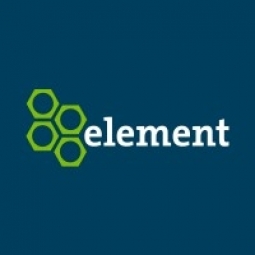Download PDF
Truck Engineering
Technology Category
- Functional Applications - Fleet Management Systems (FMS)
Applicable Industries
- Oil & Gas
Applicable Functions
- Logistics & Transportation
Use Cases
- Fleet Management
Services
- System Integration
The Challenge
A large customer in the oil and gas industry had more than 100 truck specs across all businesses and functions, making it nearly impossible to efficiently reassign vehicles when needed. Reassigned vehicles required additional upfits upon arrival, or to be sent elsewhere. Too many specs also extended and complicated the ordering process. The customer was looking to reduce the number of specs available but would need to get buy-in from both the current drivers as well as key decision makers within the company.
About The Customer
The customer is a large company in the oil and gas industry. They have a fleet size of 3,000 vehicles, including service/delivery/sales cars, light trucks, medium trucks, heavy trucks, and trailers. The customer utilizes a variety of services including accident, acquisition, and fleet partnership services. They also use a range of solutions such as fuel, maintenance, risk & safety, and title, licensing & registration solutions.
The Solution
Element Fleet Management initiated an annual Spec Summit for the customer’s internal stakeholders that represented various levels within the company. The Spec Summit brings in sample trucks, tires, inserts, etc., for attendees to view and select. Attendees work through business needs to rationalize spec options and obtain business buy-in. The Spec Summit led to a substantial reduction in the number of specs offered.
Operational Impact
Quantitative Benefit
Related Case Studies.

Case Study
Taking Oil and Gas Exploration to the Next Level
DownUnder GeoSolutions (DUG) wanted to increase computing performance by 5 to 10 times to improve seismic processing. The solution must build on current architecture software investments without sacrificing existing software and scale computing without scaling IT infrastructure costs.

Case Study
Remote Wellhead Monitoring
Each wellhead was equipped with various sensors and meters that needed to be monitored and controlled from a central HMI, often miles away from the assets in the field. Redundant solar and wind generators were installed at each wellhead to support the electrical needs of the pumpstations, temperature meters, cameras, and cellular modules. In addition to asset management and remote control capabilities, data logging for remote surveillance and alarm notifications was a key demand from the customer. Terra Ferma’s solution needed to be power efficient, reliable, and capable of supporting high-bandwidth data-feeds. They needed a multi-link cellular connection to a central server that sustained reliable and redundant monitoring and control of flow meters, temperature sensors, power supply, and event-logging; including video and image files. This open-standard network needed to interface with the existing SCADA and proprietary network management software.

Case Study
Refinery Saves Over $700,000 with Smart Wireless
One of the largest petroleum refineries in the world is equipped to refine various types of crude oil and manufacture various grades of fuel from motor gasoline to Aviation Turbine Fuel. Due to wear and tear, eight hydrogen valves in each refinery were leaking, and each cost $1800 per ton of hydrogen vented. The plant also had leakage on nearly 30 flare control hydrocarbon valves. The refinery wanted a continuous, online monitoring system that could catch leaks early, minimize hydrogen and hydrocarbon production losses, and improve safety for maintenance.








